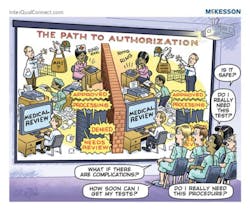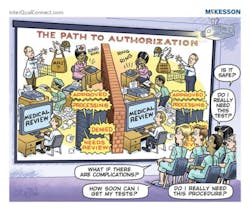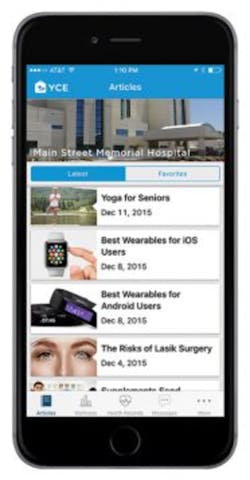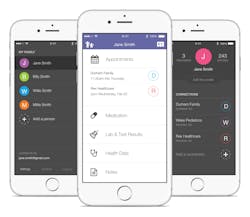Revenue Cycle Management
Price transparency at the patient portal
By Jay Deady, Chief Executive Officer, Recondo
Can your organization survive and thrive in the era of high-deductible health plans? It’s a scary proposition when high-deductible plans account for nearly a quarter of commercial policies, yet the majority of American households lack the resources to pay out-of-pocket expenses of $3,000 or more.1 These two conflicting realities portend serious problems ahead unless healthcare leaders take decisive action.
How price transparency boosts patients’ confidence in ability to pay
Numerous studies show that patients who know what they will owe for medical services are more likely to schedule them,2 while hospitals regularly report that accurate price estimates substantially improve upfront collections. Mercy Health, for example, saw a 12 percent uptick in point-of-service collections after boosting price-estimate features in its registration system.3 Carolinas HealthCare increased pre-service collections by almost 30 percent after adopting automated price estimates.4
While these price transparency tools were integrated with HIS systems like Epic for use by hospital staff, who quoted prices to patients over the phones, new advances make price transparency calculators easily accessible to healthcare consumers – and assure that more of them will schedule and receive care they can afford.
Self-service price calculators: a patient portal-facing solution
Price transparency technology has finally caught up with today’s information-driven consumers who want information fast – preferably online. In response, providers can embed a “self-service” calculator on their general website or a patient portal that enables consumers to generate their own estimates. The process is simple: Consumers input their name, insurance plan number, and a few other demographics. Within 10 to 45 seconds, a complete and accurate estimate appears based on the consumer’s current level of coverage.
How is such highly personalized data acquired? As it happens, through a blend of familiar and newer technology.
First, Recondo drives automated queries of payer websites to gather benefit-level information. The answers are merged with the provider organization’s chargemaster list and contracted rates with payers (both of which are periodically extracted from different back-end information systems and loaded into the standalone calculator). The merged info is then presented into an accurate estimate of services.
What’s newer is the application of analytics that regularly compares these estimates with previously settled claims to spot reimbursement quirks among different payers, such as one payer’s propensity to use a different code than other payers use for the same procedure. Over time, these findings are incorporated into the calculator for ever-more-accurate estimates.
It’s a solution that comes just in time. Healthcare consumers are paying more for less coverage, and understandably aren’t happy about it. This is all the more reason for providers to connect with these consumers early on. With self-service calculators they can – right from the patient portal.
References
- Helms, A., “A growing risk: High-deductible health plans can ruin finances,” Charlotte Observer, April 4, 2015; and Claxton, G., Rae M., and Panchal, N., “Consumer Assets and Patient Cost Sharing,” Kaiser Family Foundation, March 11, 2015.
- Schliefer, D., Hagelskamp, C., and Rinehart, C., “How Much Will It Cost? How Americans Use Prices in Health Care,” Public Agenda, March 2015.
- “Mercy Improves Point-of-Service Collections with Recondo-Epic Integration,” Recondo case study, August 2015.
- “Carolinas Healthcare System Achieves 80 Percent ‘Touchless’ Accounts with Patient Access Automation,” Recondo case study, June 2015.
Portal Progress Reports
Catholic Health Initiatives implementing single-portal solution
In a bid to provide patients with an easy way to interact with their healthcare providers and personal health information, Catholic Health Initiatives (CHI), one of the nation’s largest nonprofit health systems, has expanded its relationship with Allscripts to enhance patient engagement and enable clinicians to monitor care-plan compliance remotely.
The plan includes an expansion of CHI’s use of the FollowMyHealth patient engagement platform from the ambulatory to acute care settings, replacing one of its legacy acute patient portals to provide patients a single-portal experience. The platform provides patients with the ability to message physicians securely with questions regarding their health, view upcoming appointments, access test and lab results, and renew medications.
CHI will also implement FollowMyHealth Achieve, which enables providers to involve patients directly in the ongoing management of their care. Clinicians use the Allscripts TouchWorks EHR to enter orders. The orders are then available to patients at home or on their mobile devices through the portal. Home-based wireless technologies capture readings and results, and push the information to the EHR. The care team is automatically notified if the patient is noncompliant or if individual results exceed clinician-established parameters.
Dignity health goes the unified patient-record route
Patients and providers alike aim to benefit from the one-record experience being created at Dignity Health, one of the nation’s largest healthcare systems and the largest hospital provider in California.
In order to create an integrated, clinically driven network across all its acute and ambulatory care settings, Dignity Health is expanding its use of Cerner’s PowerChart Ambulatory EHR across all Dignity Health ambulatory care clinics.
PowerChart Ambulatory will integrate with Dignity Health’s 39 acute care facilities, which are supported by the Cerner Millennium EHR. As a result, patients and providers will benefit from a single-record experience. Patients will have access to a unified patient portal and will no longer have to recall medical history during appointments. Physicians will benefit from strengthened data integrity and a holistic view of a patient’s record.
In total, Dignity Health encompasses a 21-state network of nearly 9,000 physicians, 59,000 employees, and more than 400 care centers, including hospitals, urgent and occupational care, imaging centers, home health, and primary care clinics.
Solutions
InterQual Connect takes advantage of cloud connectivity to offer payers and providers an efficient workflow to automate medical review and authorization. It works with the same care management systems and InterQual Criteria that payers and providers already use, making it fast, easy, and cost effective to implement and deploy. It doesn’t require new hardware or more IT staff, because it uses a payer’s current IT infrastructure to speed deployment and minimize IT costs. Providers gain visibility into the health plan’s medical criteria, can digitally submit authorization requests, and receive fast auto authorization from within their existing workflow, using either the payer’s provider portal or their own InterQual workflow solution. McKesson
Image-enable your patient portal
DICOM Grid, named the 2015/2016 KLAS Category Leader for Image Exchange, provides a powerful, cloud-based suite that streamlines the medical image exchange process and connects patients, care providers, and facilities worldwide. CareWell Urgent Care, a leading provider of episodic healthcare in New England with over 15 locations, recently deployed DICOM Grid as a Cloud PACS, image transfer mechanism, and online portal for sharing studies with patients. In addition, studies are often shared with UMass Memorial Healthcare for analysis where a report is created, automatically attached, and shared back. At the core of the cloud PACS initiative at CareWell is the simple goal of providing patients with better access to imaging. DICOM Grid
EHR app gets MU cert
Available in the Apple App Store and Google Play, YourCareEverywhere is one of the first mobile apps to achieve Meaningful Use certification under CMS’ EHR incentive program. The app, which is co-branded with participating hospitals, allows consumers to link to their patient portal, communicate with providers, and access personalized health and wellness content. Consumers can also upload their own data from consumer health devices like Garmin, Fitbit, and Jawbone. The YourCareUniverse patient portal, designed for both the inpatient and ambulatory settings, has already been adopted by more than 340 facilities and is compatible with any EHR system. For a complete review of the EHR certification and accompanying price transparency, visit http://www.medhost.com/about-us/meaningful-use-certification. YourCareUniverse, a MEDHOST company
Medical records in the palm of your hand
Using Medfusion Plus, consumers can aggregate and access their healthcare records on their mobile devices. The information is pulled via Continuity of Care (CCD) Documents from patient portals and includes laboratory results, immunizations, medication lists, allergies, and appointments. This solution, which aims to be a one-stop destination for all of a user’s medical records, is available on the App Store and Google Play. While the mobile app was designed for caregivers (a busy mom or adult involved in the care of his or her older relative), the app’s developers think it’s also beneficial to physicians, because patients can share information with them from other healthcare providers. Medfusion
Inbound faxes get EHR incorporation
Updox, which has been the exclusive provider of Direct secure messaging for Practice Fusion since February 2014, is now adding integrated electronic faxing and document management services for users of the Practice Fusion cloud-based EHR platform. Now all incoming fax documents can be managed electronically and viewed, annotated, routed, signed, faxed outside the practice, and filed in the patient chart – all at the same time. As a paperless process, practices can eliminate their costs for fax machines, scanners, phone lines, paper, and toner, as well as staff hours by automating those processes. In total, Updox is integrated with more than 50 EHR vendors. Updox






